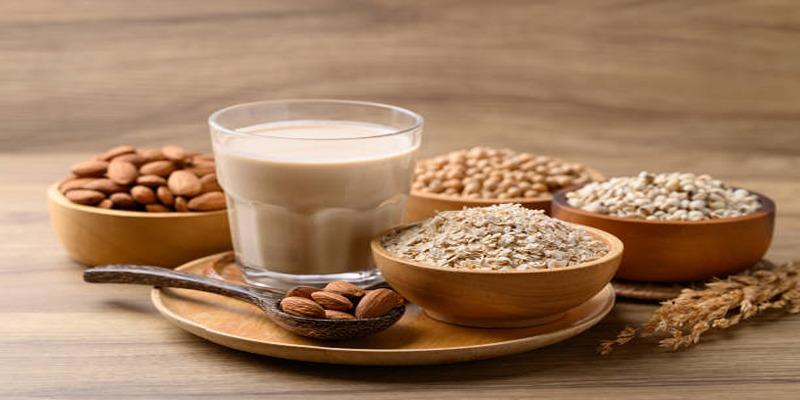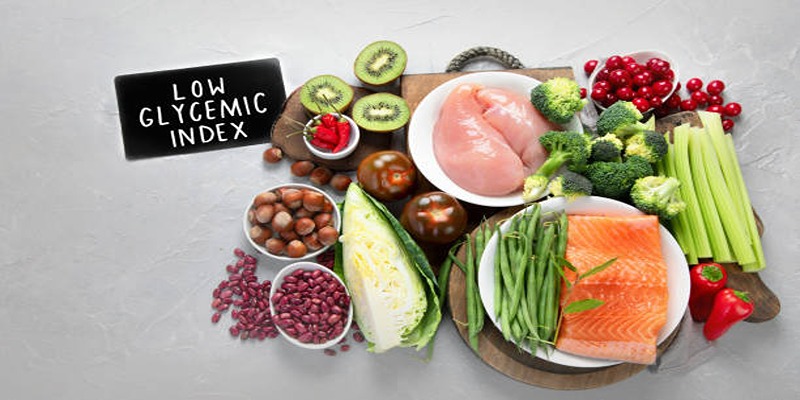Low-glycemic foods are essential to ensure stable blood sugar levels and general well-being. While eating foods that are low on the glycemic index, one can enhance energy, aid in weight loss, and lower the risk of lifestyle diseases. In this article, we shall examine the advantages of low-glycemic foods and how to integrate them in your diet.
What is Glycemic Index (GI)?
Food carbohydrates obtain their GI ranking through measurements that evaluate blood glucose responses when eating particular carbohydrates. Food ranking measures typically use values between zero and 100 to demonstrate blood glucose reaction rates. Blood sugar elevation speed determines a food's GI score according to the Glycemic Index scale and this information enables practical treatment of weight management and diabetes among others.
Difference Between Low , Medium and High GI

The digestion process of foods classified as low-GI produces a sustained blood sugar increase because they have GI values below 55. Most fruits, vegetables, legumes as well as whole grains belong to the low-GI category. Food items with Medium-GI ranking from 56 to 69 affect blood sugar moderately while bananas together with oatmeal and some bread varieties fall under this group.
White bread along with sugary cereals and processed snacks belong to the category of food with high-GI values exceeding 70 which results in fast blood sugar increases. People who understand GI values can use them to select nutritious food which promotes their well-being.
Benefits of Low-Glycemic Foods:
Including low-glycemic foods in your diet offers a variety of health benefits. Below are some key advantages explained in detail:
Managing Blood Sugar Levels
Low-glycemic foods help maintain steady blood sugar levels by releasing glucose slowly into the bloodstream. This prevents sudden spikes and crashes, which can lead to energy fluctuations and mood swings. Consistently managing blood sugar levels is particularly beneficial for individuals with diabetes, as it helps regulate their condition more effectively.
Supporting Weight Management
Foods with a low glycemic index enhance satiety, keeping you fuller for longer periods. They help curb excessive hunger and reduce the likelihood of overeating throughout the day. This makes them a great choice for individuals looking to achieve or maintain a healthy weight. By impacting insulin sensitivity positively, low-GI foods also support metabolic health, further facilitating weight management.
Reducing Risk of Chronic Diseases
Regular consumption of low-glycemic foods is associated with a lower risk of chronic conditions such as diabetes and heart disease. Their impact on insulin stability and cholesterol levels makes them heart-friendly. By minimizing oxidative stress and inflammation, these foods play a crucial role in long-term health.
Providing Sustained Energy
Low-GI foods provide a slow and steady release of energy, preventing the common midday fatigue caused by high-GI spikes and crashes. This makes them ideal for maintaining focus and productivity in daily tasks. Whether you’re at work or exercising, low-glycemic choices ensure consistent energy levels, enhancing overall performance and stamina.
Examples of Low-Glycemic Foods:
Including a variety of low-glycemic foods in your diet can help regulate blood sugar levels and boost overall health. Below are some key categories of these foods:
Fruits and Vegetables
Fruits and vegetables are great sources of low-GI carbs, full of vitamins, minerals, and fiber. Options like apples, berries, oranges, carrots, and leafy greens are low on the glycemic index and highly nutritious. They aid digestion, improve fullness, and provide antioxidants to support immune health. Adding fresh fruits and vegetables to snacks or meals is an easy way to meet your nutritional needs and maintain steady energy.
Whole Grains and Legumes
Whole grains and legumes are high in fiber and protein, making them excellent low-GI choices. Foods like quinoa, oats, brown rice, lentils, and chickpeas digest slowly, preventing blood sugar spikes. They keep you full, curb cravings, and support heart health by lowering cholesterol. Including these in meals provides lasting energy and helps maintain stable blood sugar levels.
Nuts, Seeds, and Dairy Products

Nuts, seeds, and dairy are nutrient-dense, low-GI foods with a balance of protein, healthy fats, and essential nutrients. Options like almonds, chia seeds, yogurt, and milk provide steady energy and regulate blood sugar. These versatile foods also promote fullness and support overall health, including strong bones, a healthy heart, and better weight management.
Tips for Consuming More Low-Glycemic Foods:
Planning your meals to include low-glycemic foods ensures sustained energy and better blood sugar control throughout the day. Below are some tips to incorporate these strategies effectively:
1.Meal Planning
Start by designing your meals around low-glycemic ingredients such as whole grains, legumes, and fresh vegetables. Maintaining a grocery list focused on wholesome, low-GI options ensures you always have suitable ingredients on hand for balanced meals.
2.Substituting High-GI Foods with Low-GI Alternatives
Swap out high-GI items like white bread, rice, and sugary snacks with alternatives like whole-grain bread, quinoa, and fresh fruit. Experiment with using cauliflower rice or zucchini noodles for a low-GI option in your favorite dishes. Replacing sugary drinks with herbal teas or water infused with fruits can also make a significant impact.
3.Combining Low-GI Foods with Other
Pair low-GI foods with protein sources like lean meats, eggs, or tofu and healthy fats such as avocado, nuts, or olive oil. For example, pair an apple with almond butter or enjoy a quinoa salad topped with grilled chicken and olive oil dressing. Such combinations slow digestion, stabilize blood glucose levels, and keep you feeling full longer.
Potential Misconceptions and Challenges:
When adopting a low-GI diet, it's essential to be aware of common misconceptions and challenges that may arise. Here are some key points to consider:
- Not all low-GI foods are automatically healthy; portion size and preparation methods still matter.
- High-GI foods can occasionally be included in moderation, especially during physical activity or to balance a meal.
- Reading labels is crucial, as some processed foods may be labeled as "low-GI" but still contain unhealthy additives or excessive sugar.
- It takes time and effort to plan meals, especially when transitioning from a high-GI diet, so patience and gradual changes are key.
Conclusion
Adopting a low-GI diet can lead to numerous health benefits, including improved energy levels, better blood sugar control, and enhanced satiety. However, it’s important to approach it thoughtfully, considering portion sizes, preparation methods, and balanced meal planning. With patience, gradual changes, and a focus on whole, unprocessed foods, incorporating low-GI principles into your lifestyle can be both manageable and rewarding. By making informed choices, you can promote sustainable health and well-being for the long term.












